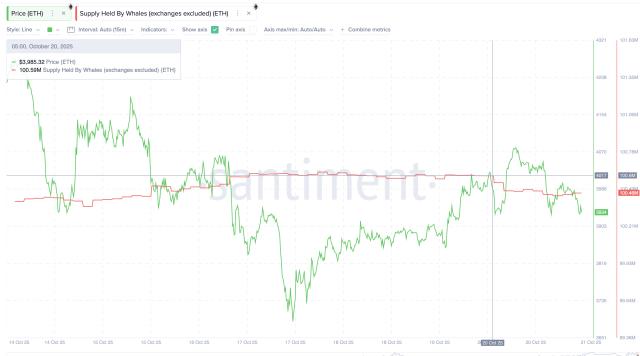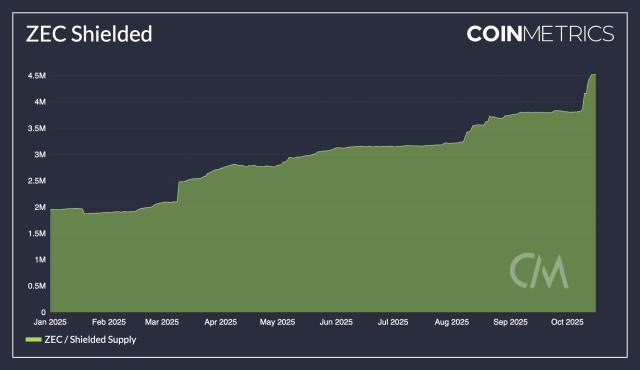- Global equities outperform crypto as institutions favor gold over Bitcoin due to reliability concerns and changing inflation-hedge preferences.
- Bitcoin ETF outflows exceed $1B after October 10, signaling institutional selling and profit-taking amid market uncertainty.
- Rumors of exchange-level liquidity stress suggest forced deleveraging, adding downward pressure and weakening crypto investor confidence.
Global stocks climb while Bitcoin stumbles. Institutions shift from crypto to gold amid reliability doubts, ETF outflows, and signs of hidden deleveraging across exchanges

GLOBAL MARKETS GAIN, CRYPTO STRUGGLES TO KEEP UP
Over the past month, global equities have shown surprising resilience.
U.S. markets, led by the S&P 500, climbed roughly 3–4% in the past four weeks, supported by strong corporate earnings and optimism around a potential soft landing for the economy. Japan’s Nikkei 225 rose even more sharply—about 6–7%—as investors cheered expectations of structural reforms and capital market liberalization under the new administration. Even China’s A-shares staged a modest recovery, with the Shanghai Composite gaining around 4.4%, buoyed by hints of policy easing and selective state-backed support for key industries.



In contrast, the crypto market has entered a distinctly different phase. Bitcoin (BTC), the bellwether of the digital asset space, fell roughly 3–6% over the past week. Ethereum and other major tokens followed the same downward trajectory, erasing part of their early-October gains. The divergence between traditional markets and crypto has become increasingly evident, and recent data offers a clear explanation.
WHY CRYPTO LAGS BEHIND
After October 11, several institutional reports raised concerns about the reliability of crypto infrastructure and the overall risk profile of digital assets.
The timing coincided with renewed strength in gold, which has continued to attract capital as a preferred inflation hedge. With inflation data still sticky and central banks hesitant to pivot toward easing, many asset managers have favored the physical stability of gold over the volatility of Bitcoin.
The shift is visible in fund flows.
Since October 10, institutional investors have been net sellers of crypto assets, with Bitcoin ETFs recording cumulative outflows exceeding $1 billion. This trend reflects a broader retreat from speculative positions as investors re-evaluate risk exposure. Adding to the pressure, the Kingdom of Bhutan reportedly moved $13 million in BTC to new wallets—widely interpreted as preparation for liquidation. Around the same period, BlackRock transferred 12,000 ETH to exchanges, a sign that even large players were taking profits or reducing exposure.
INSTITUTIONAL UNREST AND UNDERCURRENTS
Behind these data points, whispers within trading circles suggest something deeper: the possibility that one or more on-exchange institutions may be facing internal liquidity stress.
While no official statements have confirmed a collapse, the pattern of discreet large-scale position unwinding hints at forced deleveraging. Rather than announce distress publicly, some firms might be quietly closing leveraged long positions to meet outstanding debts—a move that naturally adds selling pressure to the broader market.
These developments have had a chilling effect on sentiment. While equities thrive on the back of predictable cash flows and regulated transparency, crypto still grapples with trust gaps, opaque counterparty risk, and technical vulnerabilities that deter institutional adoption. In times of uncertainty, that difference becomes decisive.
A SHIFT IN RISK PERCEPTION
Moreover, the correlation between crypto and traditional risk assets appears to have weakened. Global investors now see Bitcoin less as “digital gold” and more as a high-beta speculative instrument, highly sensitive to liquidity shifts. Meanwhile, actual gold has reclaimed its safe-haven status, supported by central-bank buying and geopolitical hedging demand.
Thus, when investors weigh two inflation-hedge candidates—one backed by centuries of trust and another still struggling with governance and infrastructure issues—the preference becomes clear. Crypto’s promise remains, but confidence has temporarily shifted elsewhere.
LOOKING AHEAD
This divergence doesn’t necessarily mark the end of crypto’s long-term narrative.
Market cycles often reset when speculative excess gives way to rebuilding phases. However, near-term headwinds—from regulatory uncertainty to institutional deleveraging—are likely to cap upside momentum.
In contrast, traditional equities may continue to benefit from macro stability and earnings visibility, while gold holds its defensive allure. For now, Bitcoin’s shine has dimmed—not because its fundamentals vanished, but because trust and timing have turned in favor of assets that feel safer in a fragile global environment.
In short, the world’s markets are marching ahead—but crypto is catching its breath.
〈Global Stocks Rally While Bitcoin Falls: Why Crypto Can’t Match Gold’s Momentum〉這篇文章最早發佈於《CoinRank》。







